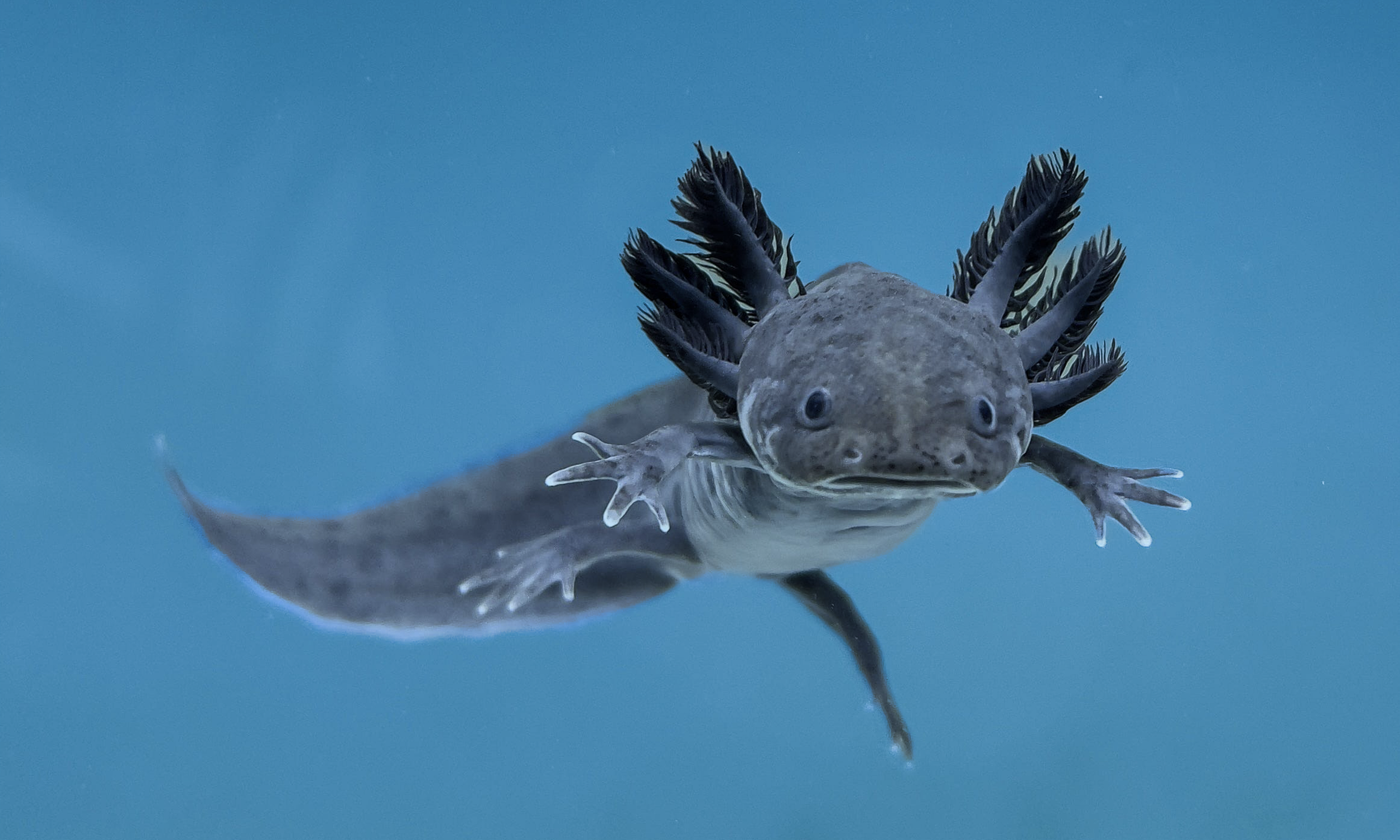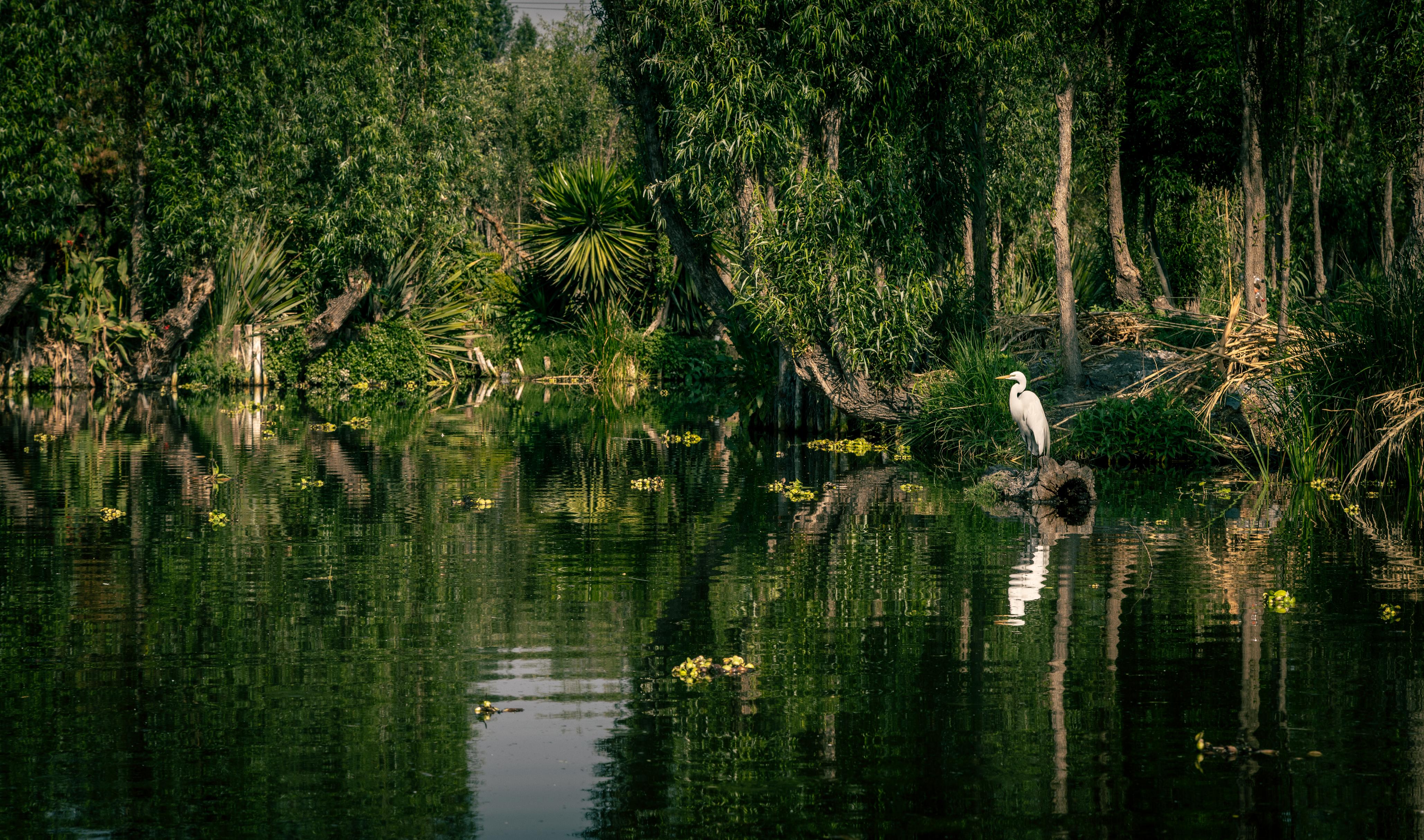
Protecting an iconic Mexican salamander
What are axolotls?
Hiding among the waterlilies and underwater hollows of a shrinking lake system outside Mexico City live the world’s last wild axolotls. These distinctive salamanders (known scientifically as Ambystoma mexicanum) are known for their feathery gills and their unusual ability to stay in their “tadpole” form for life. They’re also famous for their impressive ability to regrow lost limbs and even parts of their eyes and brains — a trait that makes the axolotl a favorite among scientists studying regenerative medicine.
While axolotls have flourished in captivity — as aquarium pets, zoo attractions and cultural icons featured in media and on Mexican currency — in the wild, they are dangerously close to vanishing forever.
Conservation International aims to reverse this trend by restoring the axolotl’s native habitat, the once-vast Xochimilco lake system — a project that will benefit not only the axolotl, but local farmers as well.

How are axolotls connected to agriculture?
Wild axolotls live in Lake Xochimilco — part of the remnants of a once vast, interconnected wetland ecosystem surrounding Mexico City. These waters are dotted with chinampas, artificial islands or “floating farms” that local people use to grow vegetables, which also provide critical axolotl habitats.
The rich soil and root systems of chinampas can also help capture carbon, offering climate benefits alongside habitat for wildlife.
But as Mexico City has expanded, many chinampas plots have been abandoned or repurposed, putting the axolotl’s last wild refuge at serious risk.
What threats do axolotls face?
Once abundant in the lakes of the Valley of Mexico, axolotls were eaten by the Mexica — the Indigenous people at the heart of the Aztec Empire. According to the IUCN Red List, there are only 50 to 1,000 individuals left in the wild today.
Urban expansion and the decline of the chinampas have drastically reduced the axolotls’ habitat. Pollution and wastewater runoff from Mexico City have created oxygen-poor water, while invasive carp and tilapia species — introduced to the lake in the 1960s and 70s — have also taken a toll, competing with axolotls for food and feeding on their eggs.

Restoring Lake Xochimilco
In an effort to bring axolotls back from the brink, ecologists at the National Autonomous University of Mexico launched the Chinampa Refugio Project. The project works with local farmers to restore chinampas throughout the lake system — creating safe havens for axolotls — while supporting sustainable agriculture.
Conservation International has joined the project, targeting one of the axolotl’s primary threats: water quality in Xochimilco. The team is installing biofilters — built from stacks of volcanic rocks and reedy plants — near chinampas to keep out pollutants and invasive fish, creating a better environment for axolotls to breed and thrive.
Over the next 10-15 years, the project aims to restore 60 percent of Xochimilco’s chinampas for farming, boosting local livelihoods, restoring axolotl numbers and creating a sustainable food source for the people of Mexico City.